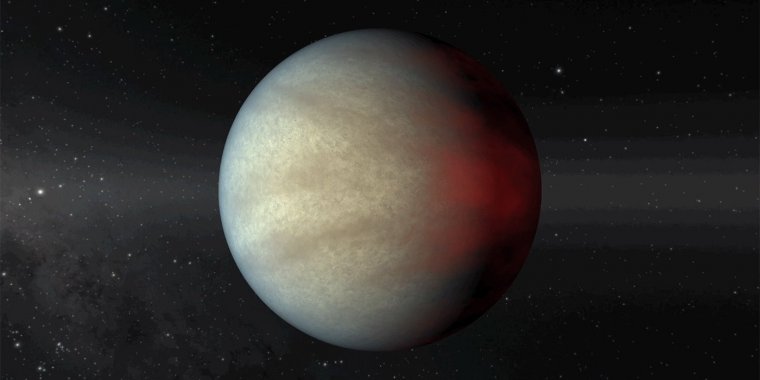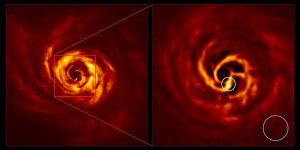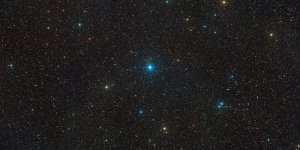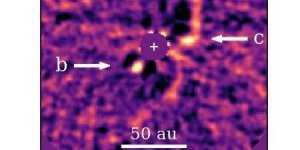| News / Space News |
Young Giant Planet Offers Clues to Formation of Exotic Worlds
Jupiter-size planets orbiting close to their stars have upended ideas about how giant planets form. Finding young members of this planet class could help answer key questions.

This shows a type of gas giant planet known as a hot Jupiter that orbits very close to its star. Finding more of these youthful planets could help astronomers understand how they formed and if they migrate from cooler climes during their lifetimes. Credit: NASA/JPL-Caltech
Among the most intriguing of the distant worlds is a class of exoplanets called hot Jupiters. Similar in size to Jupiter, these gas-dominated planets orbit extremely close to their parent stars, circling them in as few as 18 hours.
We have nothing like this in our own solar system, where the closest planets to the Sun are rocky and orbiting much farther away.
The questions about hot Jupiters are as big as the planets themselves: Do they form close to their stars or farther away before migrating inward? And if these giants do migrate, what would that reveal about the history of the planets in our own solar system?
A new study reports on the detection of the exoplanet HIP 67522 b, which appears to be the youngest hot Jupiter ever found. It orbits a well-studied star that is about 17 million years old, meaning the hot Jupiter is likely only a few million years younger, whereas most known hot Jupiters are more than a billion years old.
The planet takes about seven days to orbit its star, which has a mass similar to the Sun's. Located only about 490 light-years from Earth, HIP 67522 b is about 10 times the diameter of Earth, or close to that of Jupiter. Its size strongly indicates that it is a gas-dominated planet.
HIP 67522 b was identified as a planet candidate by NASA's Transiting Exoplanet Survey Satellite (TESS), which detects planets via the transit method: Scientists look for small dips in the brightness of a star, indicating that an orbiting planet has passed between the observer and the star.
But young stars tend to have a lot of dark splotches on their surfaces - starspots, also called sunspots when they appear on the Sun - that can look similar to transiting planets.
So scientists used data from NASA's recently retired infrared observatory, the Spitzer Space Telescope, to confirm that the transit signal was from a planet and not a starspot. (Other methods of exoplanet detection have yielded hints at the presence of even younger hot Jupiters, but none have been confirmed.)
There are three main hypotheses for how hot Jupiters get so close to their parent stars. One is that they simply form there and stay put. But it's hard to imagine planets forming in such an intense environment.
Not only would the scorching heat vaporize most materials, but young stars frequently erupt with massive explosions and stellar winds, potentially dispersing any newly emerging planets.
It seems more likely that gas giants develop farther from their parent star, past a boundary called the snow line, where it's cool enough for ice and other solid materials to form.
Jupiter-like planets are composed almost entirely of gas, but they contain solid cores. It would be easier for those cores to form past the snow line, where frozen materials could cling together like a growing snowball.
The other two hypotheses assume this is the case, and that hot Jupiters then wander closer to their stars. But what would be the cause and timing of the migration?
One idea posits that hot Jupiters begin their journey early in the planetary system's history while the star is still surrounded by the disk of gas and dust from which both it and the planet formed.
In this scenario, the gravity of the disk interacting with the mass of the planet could interrupt the gas giant's orbit and cause it to migrate inward.
The third hypothesis maintains that hot Jupiters get close to their star later, when the gravity of other planets around the star can drive the migration.
The fact that HIP 67522 b is already so close to its star so early after its formation indicates that this third hypothesis probably doesn't apply in this case. But one young hot Jupiter isn't enough to settle the debate on how they all form. (NASA)
YOU MAY ALSO LIKE





